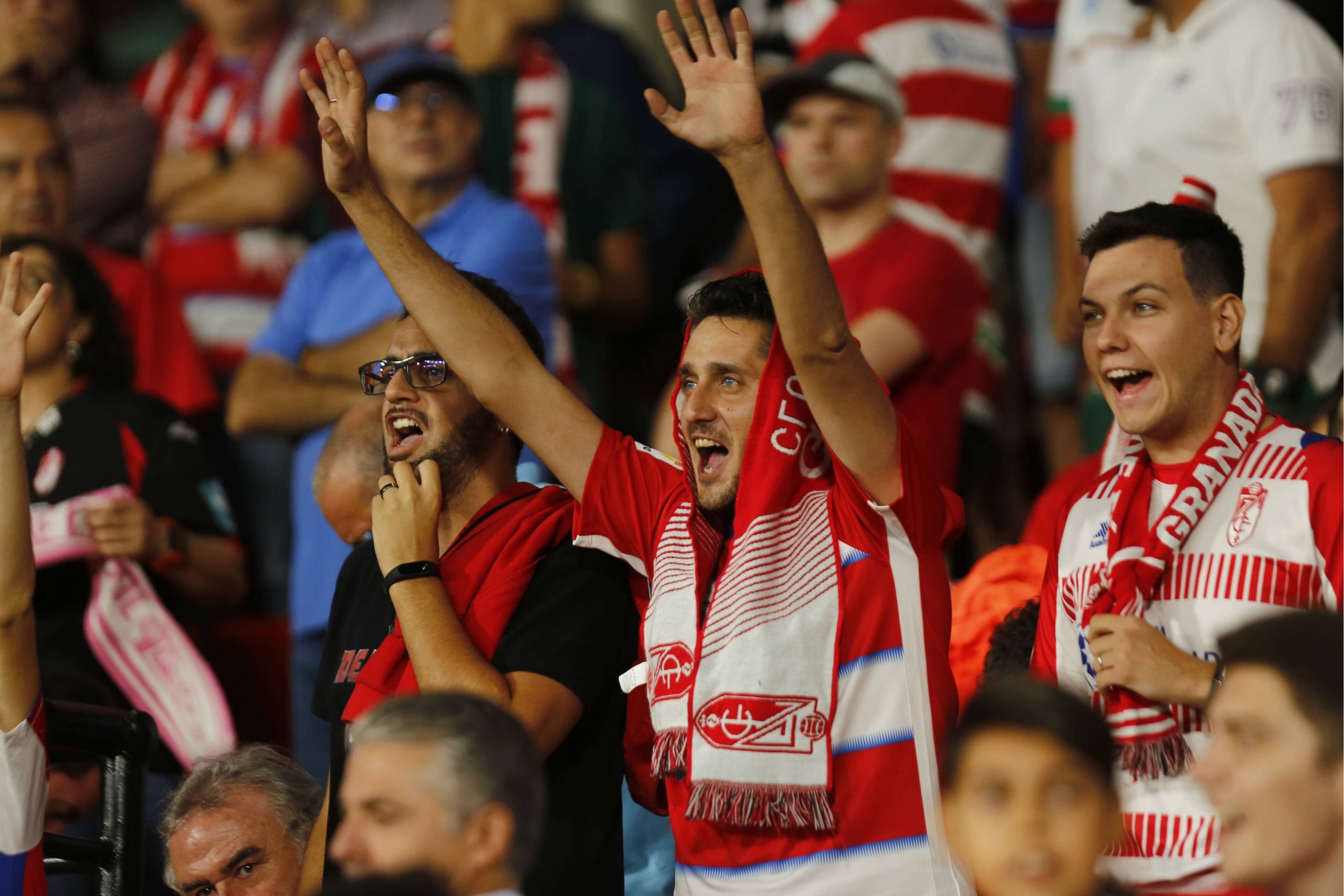Eleven of the last 15 teams promoted to La Liga have managed to secure a second season in the top flight, and Granada, Mallorca and Osasuna have all started the new campaign in a manner that suggests that they, too, are going to make a decent fist of doing so.
Their current league positions and goal differences vary considerably, but ahead of the midweek round of fixtures, all three of them had carried positive expected goal (xG) differences through their opening five matches of the campaign.
Granada
Granada were up in third at end of the weekend on the back of three wins, one draw and one defeat, and the fifth-best xG difference in the division. They’d already been quietly impressive before Saturday’s 2-0 win at home to Barcelona thrust them into the limelight. Deservedly so. After taking an early lead, they limited their opponents to eight shots that only added up to 0.51 xG. Barcelona didn’t even get an effort on target in open play until the 82nd minute.
The club’s promotion campaign was built upon a sturdy defensive unit that conceded just 28 times, and they are yet to lose by more than a single goal across Diego Martínez’s 47 matches at the helm. That will again be the foundation of any success they enjoy in the top flight; all three of their victories to date have been to nil. But their performances have also made it clear that they are a team capable of varying their approach according to the circumstances of each match.
Martínez has said that he wants his team to be chameleonic. That was one of a number of words he scrawled on the dressing room whiteboard prior to the match against Barcelona. Others, equally apt, included: cohesive, competitive, intelligent, dynamic, compact, brave. “Playing well means being flexible and having the necessary organisation to respond appropriately to whatever a match demands of you,” he explained.
That was certainly evident against Barcelona. Granada were equally comfortable pressing further up the pitch in the first half:
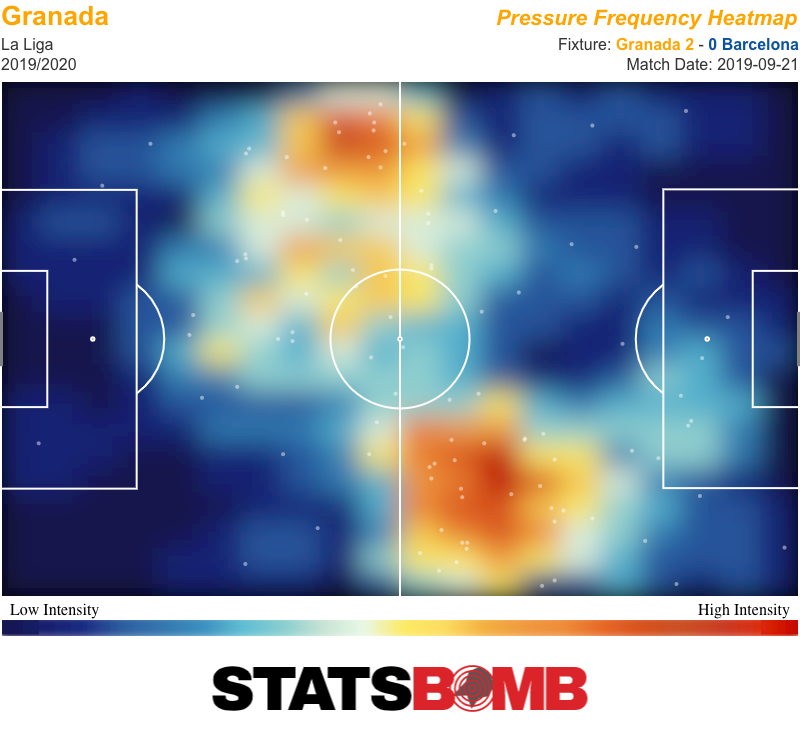
As they were in a largely deeper block after the break:
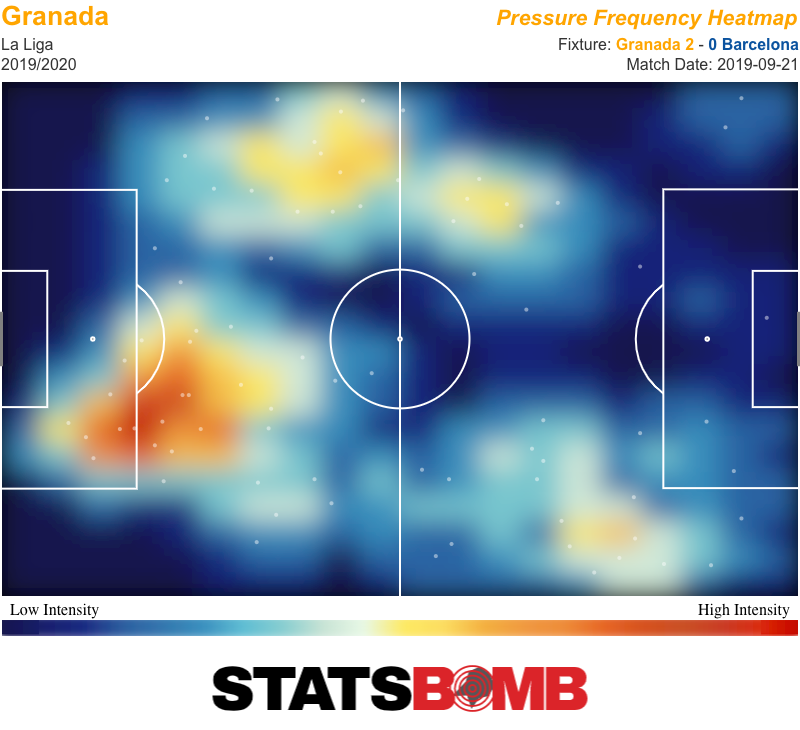
Going forward, Granada have a pair of able shot creators in Antonio Puertas and Darwin Machís and are getting off a solid 12.2 shots per match (seventh-highest in the league), even if a fair number of them (a league second-high 4.60 per match) come from outside the area. In Ángel Montoro, they possess a pretty slick ball progressor, especially in transition.
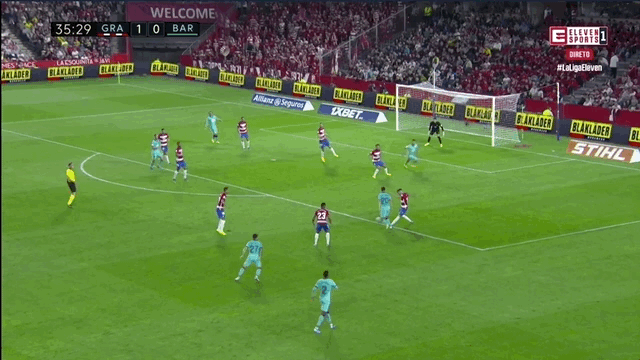
Granada have also taken full advantage of set-piece situations. In an admittedly small sample size, they lead the league in terms of both goals and xG from set-pieces (with Montoro their regular taker). Being good at attacking set-pieces doesn’t always transfer to defending them. They require different skillsets, and it isn’t as easy to hide players with concentration issues on defence. But Granada have been equally impressive there. Again in a low sample size, they have the third-best record in the division in terms of xG conceded from set pieces.
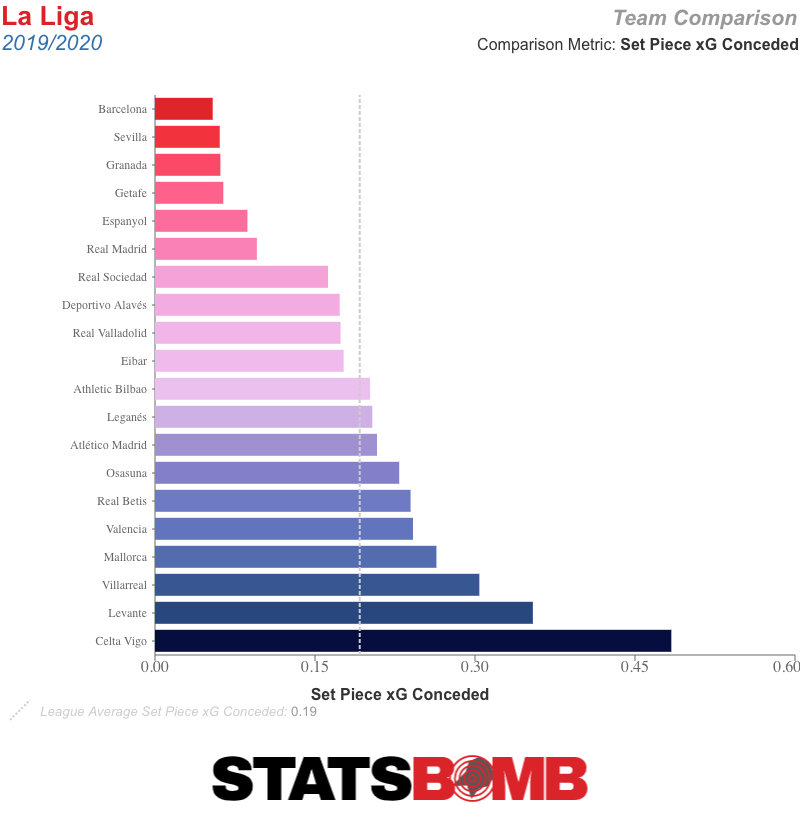
It is early days yet, and no one at Granada will be getting carried away. But they’ve shown themselves to have a varied enough toolbox to suggest they can make a good fight of remaining in the top flight.
Osasuna
In his blue jeans and navy blue t-shirt with red, four-point star emblem, Osasuna coach Jagoba Arrasate dresses as if on his way to a heavy metal rock concert. His team play at a similar amplitude. Theirs is high-octane, physical football, based around a 4-4-2 formation, a cross-heavy attack and a determined mid-block press, especially on home soil.
Osasuna dropped just four points at their atmospheric El Sadar stadium during their promotion campaign and are unbeaten there to date in the top flight following draws with Eibar, Barcelona (who, like Granada, they limited to just eight shots and under half a goal of xG) and Real Betis.
Overall, their underlying numbers are similar to those of Granada, just slightly worse in attack and slightly better in defence. Amongst the league, they carried the sixth-best xG difference through the first five fixtures. By taking better shots than those they’ve conceded, they’ve been able to convert an equal shot difference into a 0.40 xG difference.
If they can sustain solid defensive numbers -- you’d expect them to drift upwards from their current mark of 0.59 xG conceded per match, but as I’ve said before, this might just prove to be an abnormally cautious season -- Arrasate’s side should have enough going forward to maintain a positive balance.
Osasuna’s attacks are almost exclusively rapid ones down the flanks and into the channels. Notice the almost complete lack of central interplay in this pass map from their 0-0 home draw against Betis on Friday. (Red = completed pass; Yellow = incomplete pass)
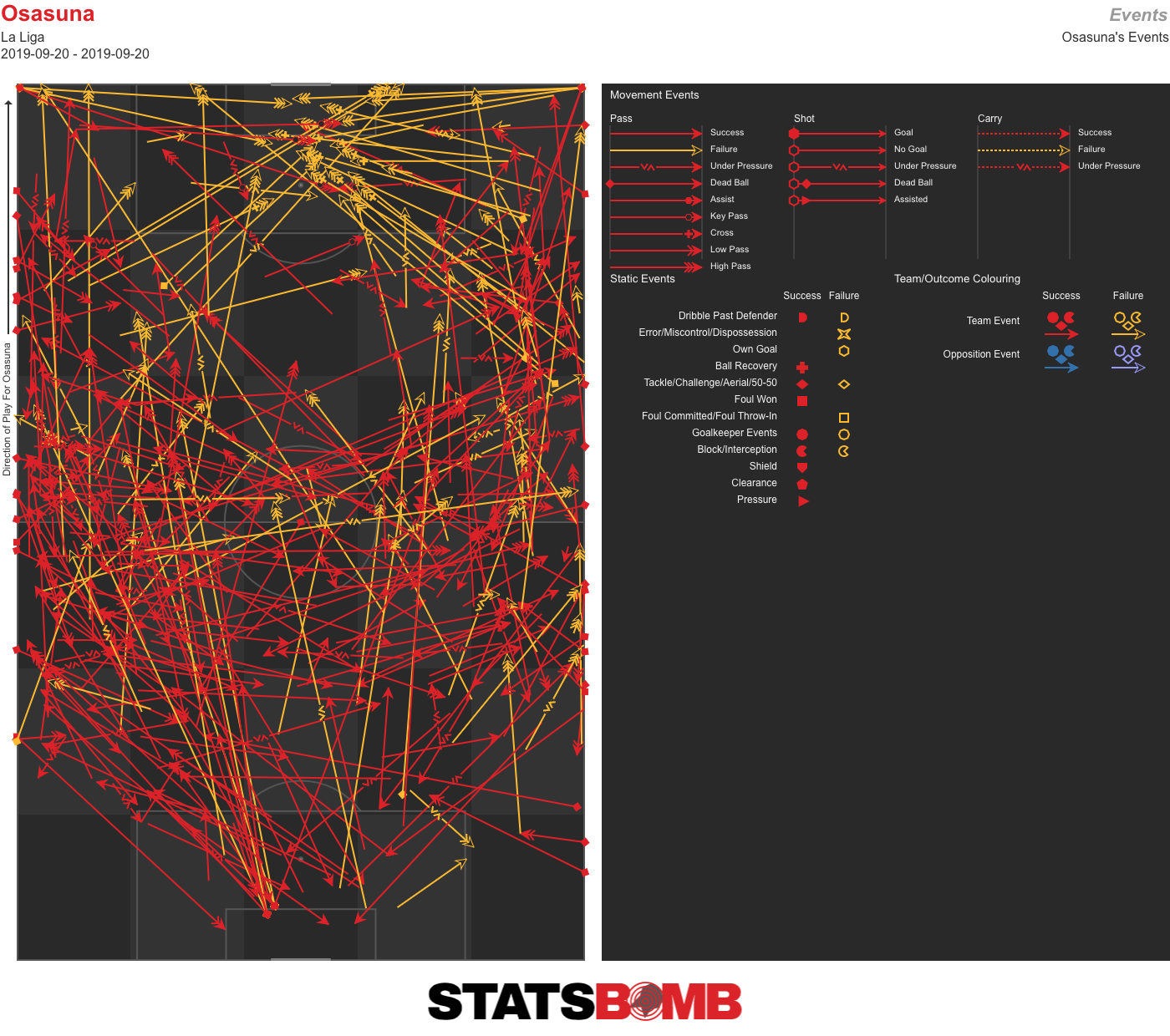
A league third-high 39% of their penalty box entries to date have come from crosses. Those are usually considered a pretty inefficient way of creating good-quality chances, but they do also have some players capable of varying things, including Chimy Ávila, one of the fastest players in La Liga and a constant menace both in and out of possession. The shots he gets you aren’t always of the best quality, but he generates, often off his own back, a good number of them: 3.69 per 90 at Huesca last season; 3.16 per 90 at Osasuna. He’s also capable of moments of creativity that add imagination to an otherwise functional attack.
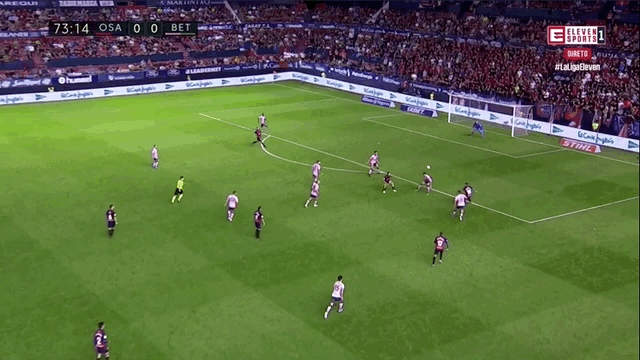
Mallorca
Mallorca are back in the top flight following two consecutive promotions, the second achieved with a rousing comeback to overturn a two-goal first-leg deficit and defeat Deportivo La Coruña in the playoff final towards the end of June. They only finished fifth in the Segunda last season, so had more ground to make up than Osasuna and Granada.
They’ve also made a less impressive start to the season, particularly in terms of results. They were just outside the bottom three ahead of the midweek fixtures following one win, one draw and three defeats, although their underlying numbers do paint a more promising picture. While not quite as good as those of the other promoted teams, a 0.23 xG difference through their opening five matches was the eighth-best mark in the league. Conceding four penalties, three of which were converted, certainly conditioned their top-line results.
Mallorca’s summer transfer work was focused on adding shots to their attack and quality to their midfield. In attack, Yannis Salibur averaged over three shots per 90 at both Guingamp and Saint-Étienne in Ligue 1, while Cucho Hernández, signed on loan from Watford, managed 3.12 per 90 for a relegated Huesca side last season; in midfield, Aleix Febas was a good free pickup, while Real Madrid loanee Takefusa Kubo brings talent as well as clear commercial opportunities -- he has already made Mallorca the most watched Spanish team in his native Japan.
Hernández is a particularly interesting signing. He got into positions to score far more than the two non-penalty goals (plus a further two from the spot) he grabbed at Huesca last season. Unless he turns out to be a historically bad finisher, he has the potential to be a very useful addition once he returns from injury.

To date, with Ante Budimir, another summer purchase, leading the attack, Mallorca have created better opportunities than their tally of four goals would perhaps suggest. While they have occasionally had problems moving the ball cleanly out of defence and through midfield into attack -- Iddrissu Baba had a particularly poor match in that regard in their weekend defeat to Getafe -- they have enough firepower up there if that can be rectified.
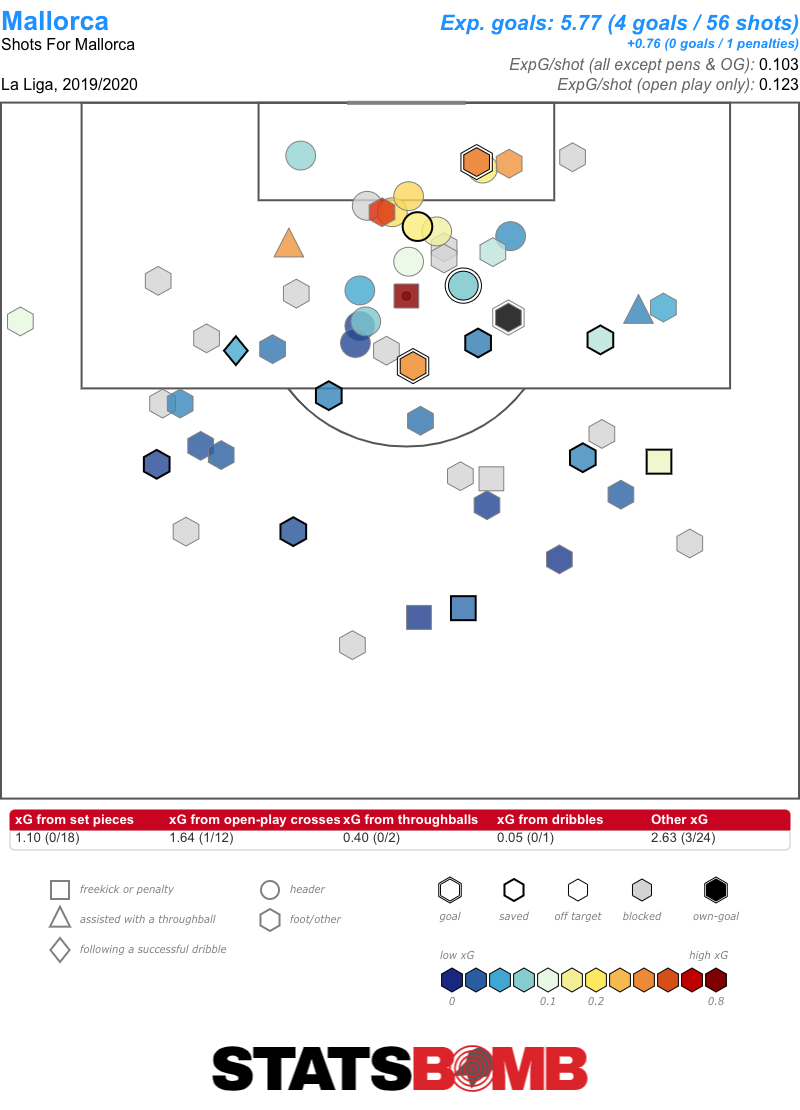
The interesting thing to keep an eye on with Mallorca will be the degree to which coach Vicente Moreno rigidly sticks to the formula that led them to consecutive promotions. While both Granada and Osasuna appear to be teams who are comfortable defending at various distances from their goal, Mallorca have a more set and passive defensive scheme. They defend deeper than the league average, while only three teams have allowed more passes per defensive action (a solid measure of aggressiveness out of possession). That has so far proved less effective in containing opponents and also means they create fewer turnovers in good areas from which to launch counters. They are bottom of the league in counter-attacking shots and rank third-bottom on shots emerging from a high press.
That won’t necessarily be a problem if they can find ways of getting their creative midfielders and shot-generating forwards on the ball in good positions from more extended possessions, but they do have the personnel to adopt a slightly more proactive off-ball style if their current approach doesn’t yield results.
Stats of Interest
How bad have Barcelona been away from home this season? Pretty bad (and it would look even worse had Athletic not gifted Luis Suárez a 0.59 xG chance with an errant back pass):
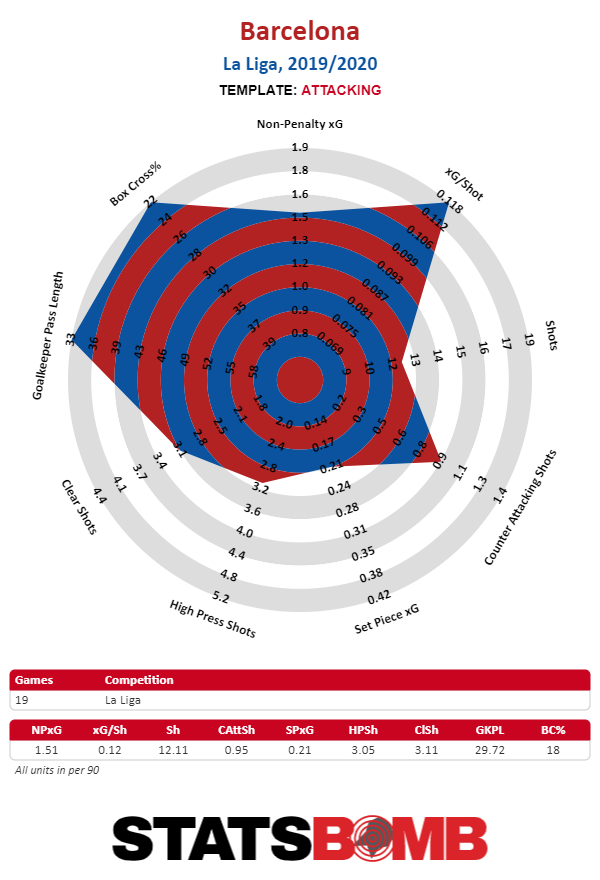
Next up this weekend, a Getafe side who conceded just 4.8 shots per match through the first five rounds -- comfortably the lowest mark across the major European leagues. “We’ve had six goals scored against us this season despite barely allowing shots on target,” coach Pepe Bordalás said after their 4-2 win over Mallorca. That much is true. They’ve only given up 11 shots on target. But the shots they have conceded have had the best average quality in the league.
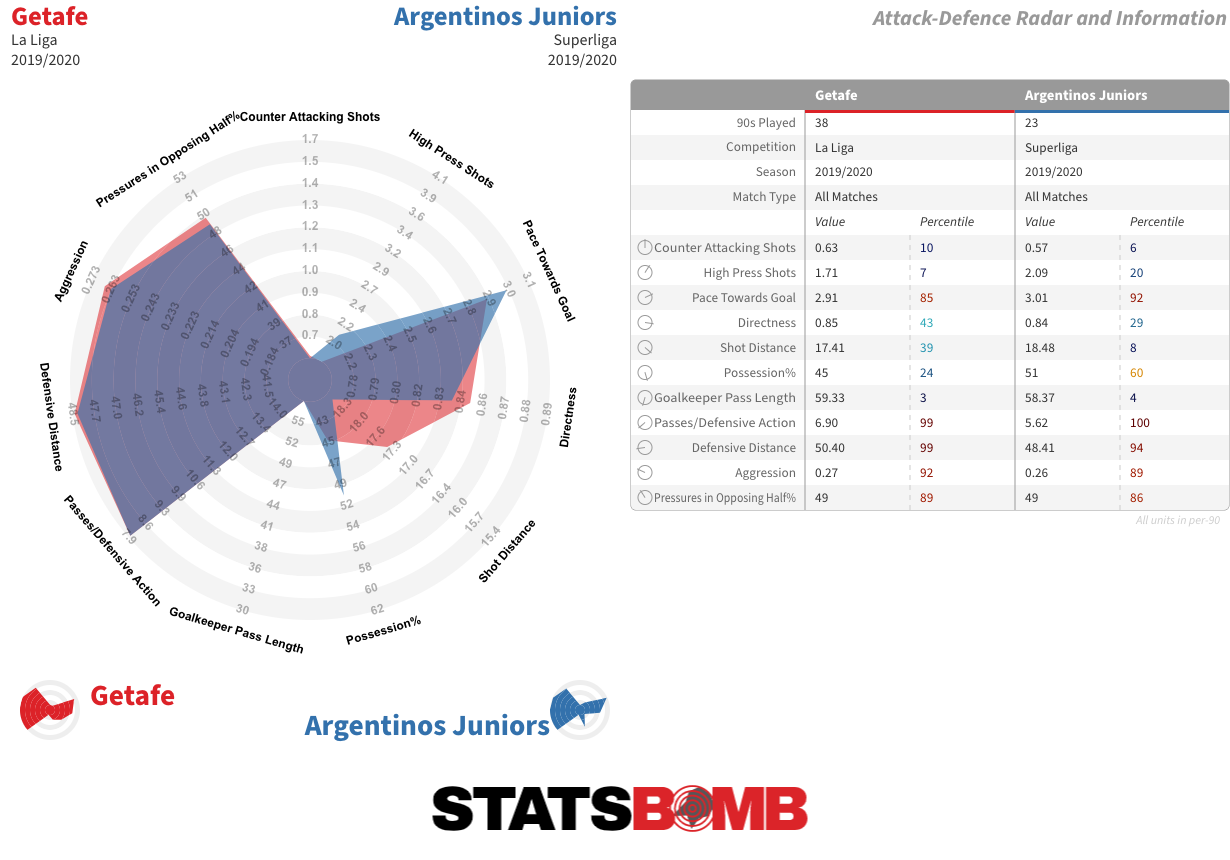
Most shots without a goal to show for it so far this season. Step forward Rubén Rochina (who should perhaps take a few more steps forward before shooting):

Header image courtesy of the Press Association
